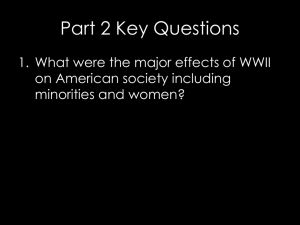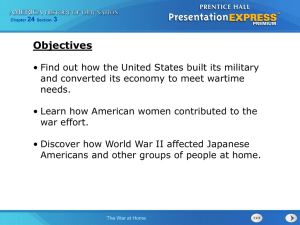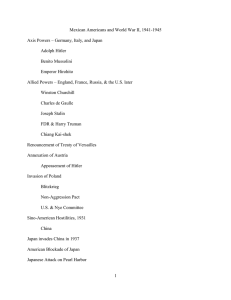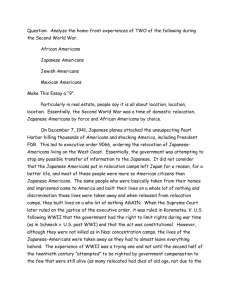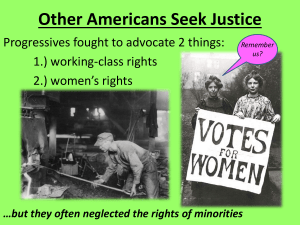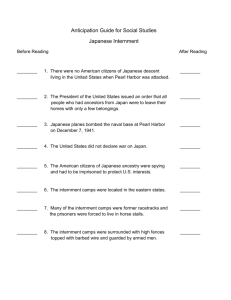WWII
advertisement
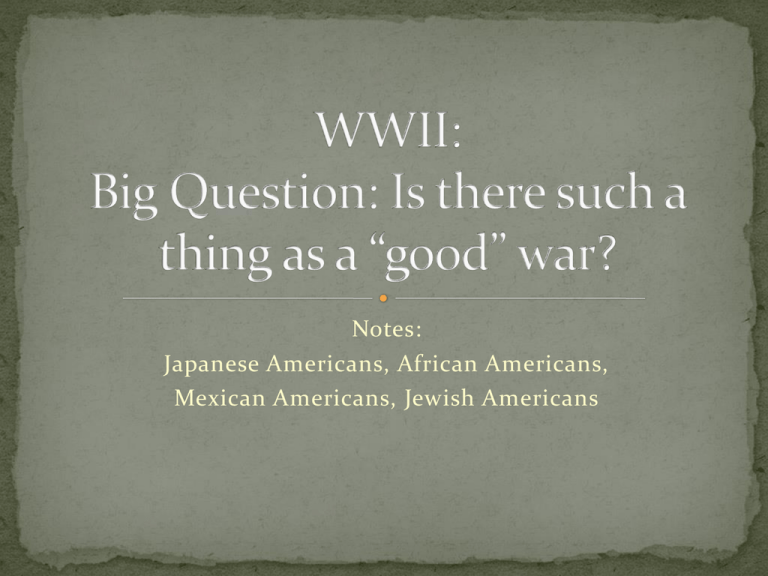
Notes: Japanese Americans, African Americans, Mexican Americans, Jewish Americans Japanese Interment Camps Fearing that Japanese Americans would be disloyal to the US, President Roosevelt ordered all people of Japanese ancestry living on the West Coast into internment camps These camps were located in deserts, and living conditions were harsh Families were forced to live in flimsy barracks without running water Despite these injustices, Japanese American men volunteered for military service The Japanese 442nd Regiment earned more medals than any other army brigade in US History 900,000 African Americans served in the military during WWII They were trained in segregated camps and initially assigned to noncombat jobs Eventually they were allowed to participate in combat, where units such as the Tuskegee Flyers became known for their skill and courage At home, 2 million African Americans helped the war effort by working in defense plants Many Mexican Americans served with distinction in the military, some earning the Congressional Medal of Honor. However, Mexican Americans still faced prejudice in the armed forces and at home The Bracero Program, designed to increase food production, allowed farmers to hire Mexican workers to pick crops, usually for low wages Mexican American workers at defense plants moved into areas called barrios Zoot suiters became targets for attack by white sailors and soldiers in Los Angeles in 1943 Jewish Americans were deeply concerned about the anti-Semitism that swept Germany before and during WWII Refugees, fleeing Hitler’s terrible persecutions, found few countries that would accept them At first the US refused to increase immigration limits for German Jews Eventually, FDR established the War Refugee Board, which rescued 200,000 Jews from the Nazis Jewish servicemen saw firsthand the horrors of the death camps

